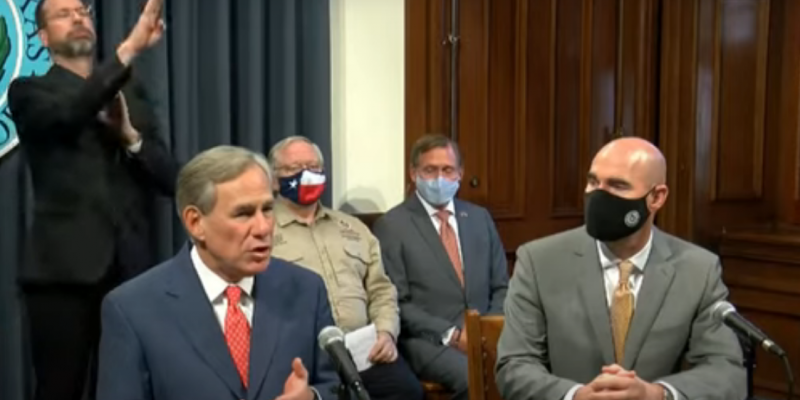With COVID-19 hospitalizations in the state down, Gov. Greg Abbott says that most businesses and restaurants can expand their reopening capacity.
Beginning Monday, all businesses that were previously open at 50 percent capacity will be able to reopen at a 75 percent capacity except in areas where coronavirus hospitalizations remain high.
The Rio Grande Valley, Laredo and Victoria regions are excluded from this reopening phase, Abbott said. Bars are also excluded from reopening because Abbott said they are among the worst places for coronavirus outbreaks.
In late June, Abbott shuttered bars and reduced restaurant capacity to 50 percent, after which several bar owners sued.
The governor issued executive orders expanding occupancy levels for restaurants, retail stores, office buildings, manufacturing facilities, gyms and exercise facilities, museums, and libraries, and re-authorizing elective surgeries for a majority of the state of Texas.
After receiving widespread criticism for the state’s failed nursing home policies, Abbott announced new visitation guidance Thursday.
Eligible nursing homes, assisted living facilities, intermediate care facilities, home and community-based service providers, and inpatient hospice will be able to implement them effective Thursday, Sept. 24.
Under new guidance, residents of long-term care facilities will be allowed to designate up to two essential family caregivers provided with necessary training to enter the facility for a scheduled visit, including in the resident’s room. Designated caregivers will not be required to maintain physical distancing, but only one caregiver can visit a resident at a time.
A long-term care facility resident (or legal representative) can designate the essential caregiver, who can be a family member, friend, or other individual. Facilities are required to train essential caregivers on the proper use of personal protective equipment (PPE) and other infection control measures, and the caregiver must test negative for COVID-19 within the previous 14 days before the initial visit.
The statewide mask mandate will stay in place until “better strategies are available,” he said.
According to the state’s coronavirus dashboard, as of Sept. 15, there have been 674,772 confirmed cases of the coronavirus, 590,837 recoveries and 14,478 deaths. The state dashboard excludes false positive data and the percentage of deaths that include comorbidity factors.
Comorbidity involves having “more than one disease or condition present in the same person at the same time,” or “chronic or long-term conditions,” or “coexisting or co-occurring conditions.” These conditions include influenza and pneumonia, respiratory failure, hypertensive disease, diabetes, vascular and unspecified dementia, cardiac arrest, heart failure, renal failure, intentional and unintentional injury, poisoning and other adverse events, and other medical conditions.
The CDC recently reported that of the state data it received, 94 percent of deaths recorded “with” the coronavirus included at least one other underlying health condition like respiratory illness, diabetes, and heart disease.
“COVID-19 was the only cause mentioned” for 6 percent of the coronavirus deaths reported, according to death certificate data received and coded by the National Center for Health Statistics as of Aug. 26.
Of the 94 percent who died with COVID-19 and other ailments, there were, on average, “2.6 additional conditions or causes per death.”
The deceased could have died from a heart attack or stroke but also tested positive for the coronavirus. The cause of death was then marked “with COVID-19” instead of solely “by COVID-19” and included in the overall coronavirus death count.
Advertisement
Advertisement

